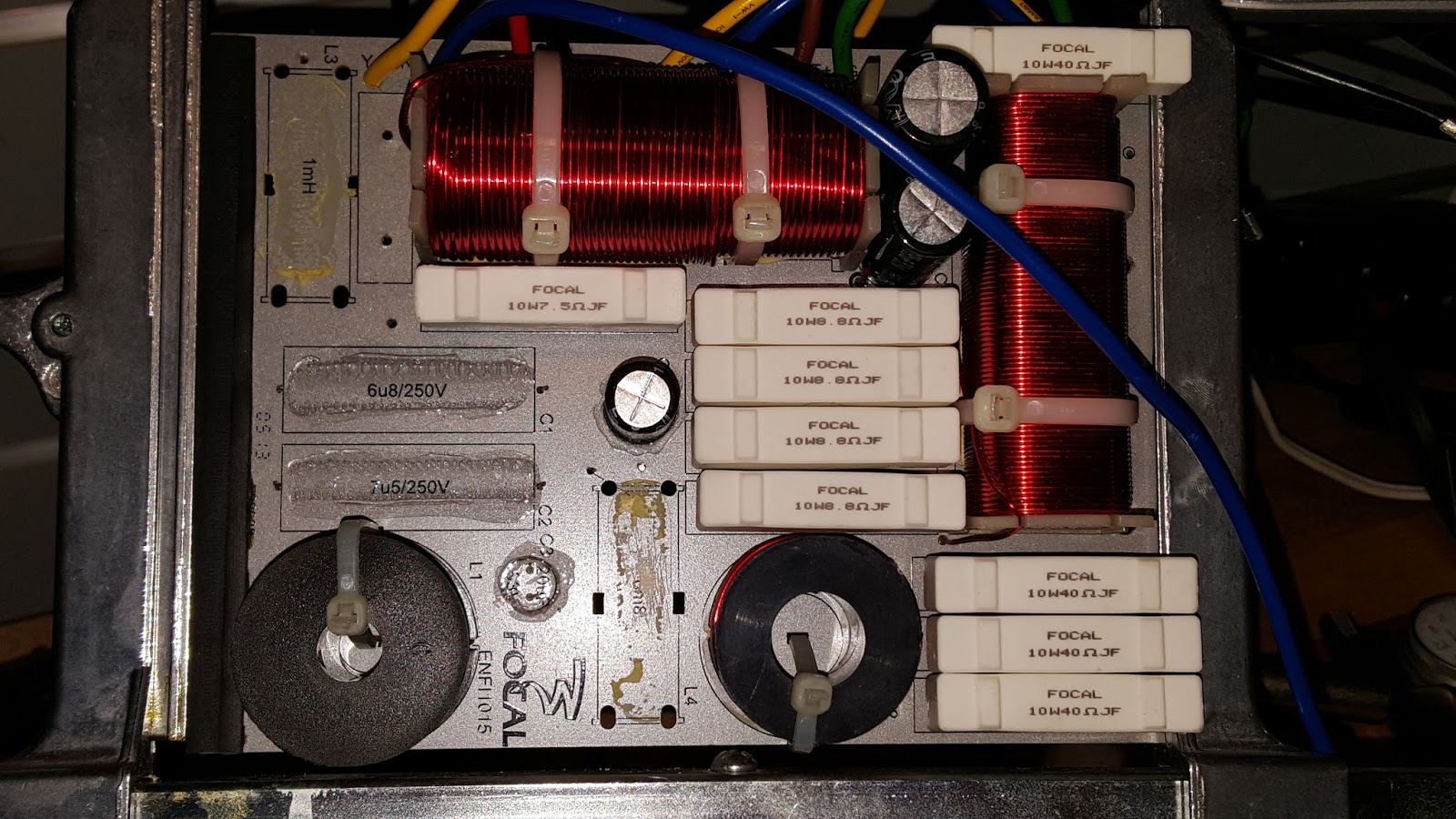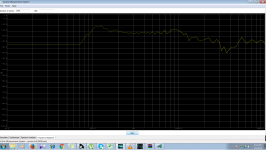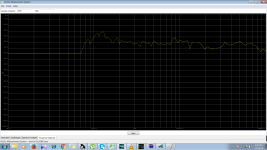Here is an example from Focal with 4 coils on one board. They achieve the 90 degree rule in all but 1 of the coils. The coil on the bottom left. Hard to tell if that would have a measurable effect without testing due to the distance, but the crowding is only needed to keep the 3 driver sections on one board.
The lower two coils go to the tweeter section. The large two coils go to the woofer.
My guess is that the lesser of evils was to risk the lower left coil coupling with the coil next to it rather than either of the large, bass coils.
The original board had 2 more coils to the midrange though, which were not able to maintain this rule at all in relationship to the bass coils that you still see.

The lower two coils go to the tweeter section. The large two coils go to the woofer.
My guess is that the lesser of evils was to risk the lower left coil coupling with the coil next to it rather than either of the large, bass coils.
The original board had 2 more coils to the midrange though, which were not able to maintain this rule at all in relationship to the bass coils that you still see.

Last edited:
so, i went ahead and powered up the speakers yesterday, from a measly 3W class-D because that's what i had lying around . to my utter surprise those 3W seemed enough ... the bass is punch with the vocal and highs clear and loud .............the speakers does sound nice...
So on to more fiddling .....
1. Do i need to put damping material on the inside of the box.?
2. How do i systematic measurements,and see if the speaker crossover are playing nice with each other . ?
So on to more fiddling .....
1. Do i need to put damping material on the inside of the box.?
2. How do i systematic measurements,and see if the speaker crossover are playing nice with each other . ?
so, i went ahead and powered up the speakers yesterday, from a measly 3W class-D because that's what i had lying around . to my utter surprise those 3W seemed enough ... the bass is punch with the vocal and highs clear and loud .............the speakers does sound nice...
So on to more fiddling .....
1. Do i need to put damping material on the inside of the box.?
2. How do i systematic measurements,and see if the speaker crossover are playing nice with each other . ?
Measurement is the answer to both of your questions.
1 - Damping materials do a couple of things. They may minimize standing waves, but they also affect the effective volume of the cabinet. When I went to school I was told that adding fiberglass stuffing could add about 15% virtual volume which would lower the Q. So if you take the two into consideration, you might be able to make a slightly smaller box for the same results.
Done wrong, they can also block your port making it ineffective.
I would suggest experimenting and measuring with the speakers in the listening location.
2 - Measure your speaker normally and with the tweeter reversed. The inverted tweeter should have a deep and symmetrical null appear.
3 - Measure the impedance curve of both speakers. This is a good quick test to make sure your crossover components are all working and connected. It will also help ensure any stuffing you added is about equivalent.
Last edited:
i will follow the instructions as given, in the following link .
Speaker Response Testing and Analysis ......and see....if everything is setup correctly ....
thanks for all the help.
regards
Speaker Response Testing and Analysis ......and see....if everything is setup correctly ....
thanks for all the help.
regards
Lots of software has a time window to allow for a quasi-anechoic measurement. I think REW does. This is all you need. If you must test the drivers separately, you can put the mic close to the driver and use the time window to eliminate the effects of other drivers. This is going to be far better than using free spectrum analyzers and relying on level differences. 
However, these measurements can be academic to the question of overall speaker balance, and proper driver connections (i.e. phase). A full range, time gated measurement at 1' to 3' is all you'll really need except in the very smallest of rooms.
However, these measurements can be academic to the question of overall speaker balance, and proper driver connections (i.e. phase). A full range, time gated measurement at 1' to 3' is all you'll really need except in the very smallest of rooms.
this is what is shown in audio measurement system ...stuff that i dont understand ...
1, why does the spectrum analyzer start from 100HZ and go only till 10KHz?
2. the microphone was placed 1 inch from the speaker , is this correct.?
3. why is there a dip at 3-4khz mark is it due to the fact that my crossover point is 4Khz)?
4 . Am I doing anything correct ??
Both the amplifiers and computers volume was set to 50% as it gets really loud...
Some guide will really be helpfull..
REgards
1, why does the spectrum analyzer start from 100HZ and go only till 10KHz?
2. the microphone was placed 1 inch from the speaker , is this correct.?
3. why is there a dip at 3-4khz mark is it due to the fact that my crossover point is 4Khz)?
4 . Am I doing anything correct ??
Both the amplifiers and computers volume was set to 50% as it gets really loud...
Some guide will really be helpfull..
REgards
Attachments
- Status
- This old topic is closed. If you want to reopen this topic, contact a moderator using the "Report Post" button.
- Home
- Loudspeakers
- Multi-Way
- my first speaker build

